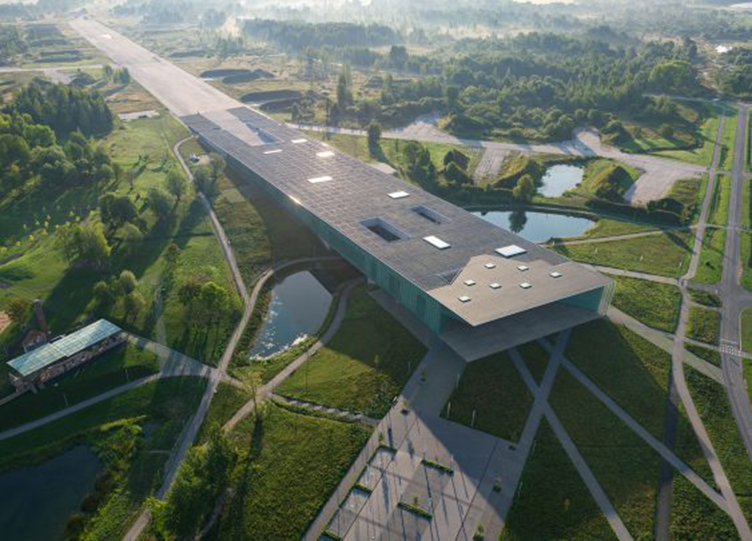
Estonian National Museum. Photo: Propapanda / image courtesy of DGT.
Archaeology of the Future
- 4 October 2019
- 6:30pm – 8pm
- Daiwa Foundation Japan House, 13 - 14 Cornwall Terrace, London NW1 4QP. Nearest tube: Baker Street
- http://dajf.org.uk/event/archaeology-of-the-future
- 020 7486 4348
- events@dajf.org.uk
- Tweet
In this seminar, two prominent young architects from the UK and Japan will discuss the intersection between the future and the past in the present, physical actuality of architecture.
Tsuyoshi Tane and Matt Ball will examine from two different perspectives the way in which architecture offers the possibility to capture the convergence of the past, and memory, with the future. Tane aspires to create an architecture that nobody has ever seen, experienced, or even imagined. But this is different from a future-oriented architecture. Rather, it is an architecture that inherits the memory of a place from the past and carries it into the future. He started practising architecture in 2006 and has become known for designs such as the Estonian National Museum, his “Kofun Stadium” proposal for the New National Stadium of Japan, and “Todoroki House in Valley”. In his work, he traces history, digging down like an archaeologist, and investigates civilisations and cultures like an anthropologist. His is a highly research-based approach which enables us to encounter the forgotten memories hidden by the pressures of modernisation and globalisation. These memories are not something belonging to the past but are a driving force to create architecture for the future. Tane will introduce his working philosophy, “Archaeology of the Future”.
About the contributors
Tsuyoshi Tane is a Paris-based Japanese architect, and founder of Atelier Tsuyoshi Tane Architects. In 2006 he won the international design competition for the new Estonian National Museum, which took 10 years to complete and was re-opened in autumn 2016. He also gained international attention in 2012 when his “Kofun Stadium” proposal for the New National Stadium of Japan was selected as one of the finalists. He is currently involved in multiple projects around the world, mainly in Europe and Japan, with the common theme “Archaeology of the Future”. Tane’s major works include the Estonian National Museum (2016), “Todoroki House in Valley” (2018), Toraya Paris (2015), and “LIGHT is TIME” (2014). He was nominated for the Mies van der Rohe Award 2017, and has won many other awards, including “Nouveaux Albums des Jeunes Architectes 07-08” from the French Ministry of Culture, the Grand Prix at AFEX 2016, the 67th Japanese Minister of Education’s New Face Award for Fine Arts, and Nikkei Architecture’s Architect of the Year 2019. He has been teaching at Columbia University’s Graduate School of Architecture, Planning and Preservation since 2012.
Matt Ball is an Associate Director at David Chipperfield Architects. After having completed a Master’s Degree at the University of Edinburgh, he worked in Barcelona and Manchester for six years. He has been involved in many architectural projects internationally, which include Fayland House in Buckinghamshire, UK, the competition for the new Southwest Wing of the Metropolitan Museum of Art in New York, and the Inagawa cemetery chapel and visitor centre in Japan. He joined David Chipperfield Architects in 2010 and became a Studio Director in 2016. His role focuses on design and concept development across a broad range of projects in the London office.
